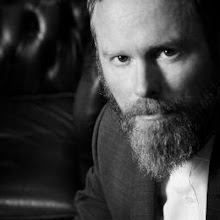DOMINIC SHEPHERD
Jerusalem
Private View
Thursday November 22nd
6.30-8.30pm
Exhibition
Dates
Friday November 23rd
– Saturday December 22nd 2012
Gallery Hours
Wednesday–Saturday 11am–6pm or by appointment
The road of excess leads to the palace of wisdom
William Blake
In William Blake’s poem ‘Jerusalem’ the 18th century
visionary asks whether Jesus Christ once visited England, as legend has
suggested. And he asks, ‘was Jerusalem builded here, Among these dark Satanic
Mills’? In doing so Blake condenses over a thousand years of history by
visualising Jerusalem - or heaven - in the contemporary landscape of early
industrialisation, and in England. The phrase ‘dark Satanic Mills’ belies
Blake’s concern about the development of society, where relentless industrial
and capital progress became a clear and prevailing threat to the individual and
the spiritual. The perceived loss would be the pastoral, idyllic lifestyle
defined by natural simplicity. At least, this is the view that returns in
cycles throughout history and is recalled again by Dominic Shepherd.
Shepherd’s paintings represent a contemporary
visualisation of the Golden Age, that idealised, mythical time in Arcadia of
innocent pleasure. As with Blake’s ‘Jerusalem’, it is a place similar to Eden, that
resonates with any individual who longs to remove himself, as Shepherd has
done, from the flux of city life – from the industrial and technological. But
the Latin phrase ‘Et in Arcadia ego’ warns us that ‘Even in Arcadia, I [death]
am there’. And similarly Shepherd shows us that fear and loss also inhabit
these mythical, idyllic worlds. Drawing on folklore and the transference of
wisdom through festival and ritual, Shepherd depicts his subjects performing
such rites. ‘The ghosts of England’ - Pearly Kings,
Morris dancers, romantic poets, gurus - occupy his paintings, ‘working, singing
or dying to create a New Age of Romantic pastoralism’. However, these pastoral
revivalists twist and implode in the midst of Epicurean hedonism and counter
cultural zeal.
Shepherd’s recent reintroduction of the tondo
and of trompe l’oeil frames painted within the picture plane serve to help the
illusion of observing this other world. We are quite literally given windows –
or perhaps mirrors – that invite us to witness the rituals within his elaborate
alternative reality. Personal memory, cultural and political history, dream,
imagination and the hallucinatory are drawn on to form symbols, obscure meanings, suggested narratives, and allusion to the
arcane. This invented domain is the artist’s New Jerusalem.
+4+-+Copy+(334x400)+-+Copy.jpg)








.jpg)
No comments:
Post a Comment